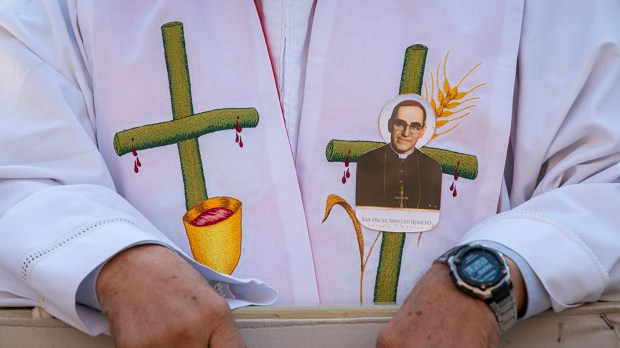A canonized saint in the Roman Catholic Church is someone who has lived a life of heroic virtue and whose example is particularly edifying for the Christian faithful. Not everyone is declared a “saint,” but that does not mean that they aren’t enjoyed the beatific vision of God in heaven.
For those men and women who are canonized, a lengthy process is initiated in which their lives are first examined. If they are shown to have lived a life of heroic virtue, their cause typically progresses and the next stage depends on the verification of miracles.
In order to be beatified (the last step before being canonized), an individual needs to have one miracle attributed to their intercession.
Miracles are described by St. Thomas Aquinas as “those things … which are done by divine power apart from the order generally followed in things.” This means that a miracle must have hard evidence that it did not follow the rules of nature.
One of the most common type of miracles is the sudden healing of someone. According to author Michael O’Neill, “For the cure to be considered miraculous, the disease must be serious and impossible (or at least very difficult) to cure by human means and not be in a stage at which it is liable to disappear shortly by itself. No medical treatment must have been given, or it must be certain that the treatment given has no reference to the cure. The healing must be spontaneous, complete and permanent.”

Read more:
This is how miracles are approved by the Church
The local bishop is put in charge of investigating the miracle and if it is verified, the man or woman is named “Blessed.”
After that stage is complete, a second miracle is required before the final canonization can occur to name the person a “Saint.” On occasion this requirement has been waived, such as in the case of St. John XXIII where only one miracle was verified.
Also, sometimes this procedure is adjusted for saints who have had a long history of veneration. This is called “equivalent canonization” and while the process is not identical, it still requires a history of miraculous intervention.
Cardinal Angelo Amato explained in 2014 that, “an equivalent canonization requires a longtime liturgical cult, the ‘constant and common attestation’ of credible historians about the person’s virtues, and an ‘uninterrupted reputation for wonders’ obtained through that person’s intercession.”
In this case more than two miracles are required and the canonization only occurs after a lengthy time has passed, proving the individual’s heavenly intercession.
Canonization is not meant to be a “reward” for certain men or women after their death, but a public confirmation of their saintly life and union with God. Saints are meant to encourage us in our daily struggle for sanctity and show us the path forward.

Read more:
Augustine, Pelagia, and other sinners who became great saints

Read more:
Now that’s a lotta saints! Vatican’s “saint-maker” to retire after 913 canonizations

